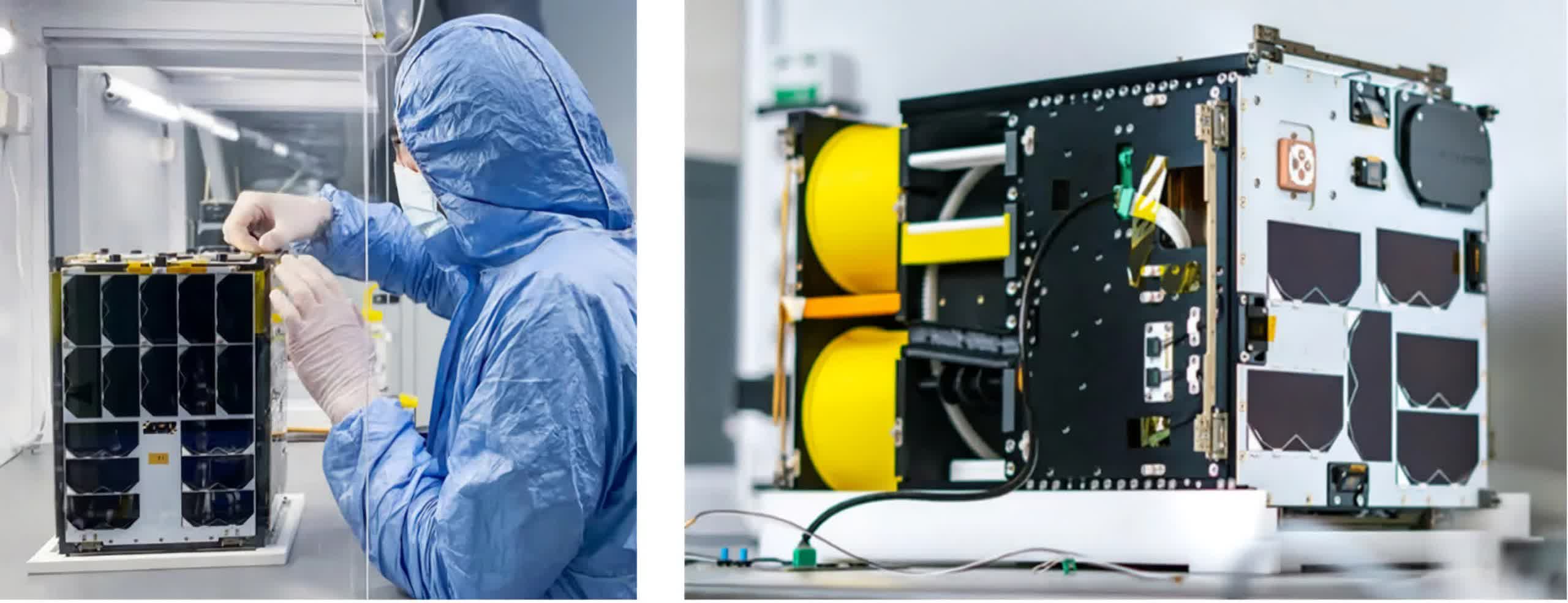Serving tech enthusiasts for over 25 years.
TechSpot means tech analysis and advice you can trust.
A new kind of solar power: NASA's Advanced Composite Solar Sail System recently hitched a ride to space on Rocket Lab's Electron launch vehicle. The spacecraft survived the trip and successfully deployed its solar sail and supporting booms. The futuristic sail will carry the craft in orbit around our planet using only photons from the sun for acceleration.
The Advanced Composite Solar Sail System (ACS3) team received data indicating official confirmation of the sail's deployment on Thursday at 5:33 UTC (1:33 p.m. EDT). The deployment is the first step in its mission to demonstrate the operation of a composite boom solar sail in low-Earth orbit.
Ships have navigated the seas of our planet using wind-powered sails as a primary means of propulsion for thousands of years. Much like these sailing ships, the ACS3's primary means of propulsion is based on external pressure applied to its attached sail. However, instead of wind, the sail uses the pressure of the sun's rays to generate the propulsion. The mechanics involve photons bouncing off the reflective sail, pushing the spacecraft in the desired direction based on the sail's orientation.
Just in time for a Labor Day "sail", @NASA's Advanced Composite Solar Sail System (ACS3) has successfully deployed!
Solar sail propulsion systems like ACS3 can make future low-cost deep space missions possible.
Learn more about the ACS3 mission to fly using the power of the... pic.twitter.com/mahG9pJxnz
Unlike traditional spacecraft limited by available fuel and engine capacity, the solar sail is only limited by the durability of its materials and corresponding control systems. The ACS3 is a twelve-unit (12U) CubeSat built by NanoAvionics that measures just 9x9x13 inches (23x23x34 centimeters).
The microwave-sized spacecraft uses flexible polymer and carbon fiber composite booms to deploy the spacecraft's sail. Once unfurled, the sail measures approximately 860 square feet (80 square meters), a footprint equal to that of a small apartment.


Observing and analyzing the booms' performance is particularly important for NASA engineers. In the past, sail booms were either heavy metallic materials or lightweight composites with an undesirably bulky design. The ACS3's new smaller composite booms are more durable and less prone to bending. Furthermore, they can roll up to minimize the room required to store them while providing the necessary rigidity to support the sails.
"Seven meters of the deployable booms can roll up into a shape that fits in your hand," said Alan Rhodes, the mission's lead systems engineer at NASA's Ames Research Center.
The spacecraft will orbit the planet approximately 600 miles (1,000 kilometers) above the Earth and should be visible to skywatchers on clear nights due to the high reflectivity of the sail's materials. NASA will use flight data obtained during the ACS3's tests to design future composite solar sail systems for space weather early-warning satellites, surveillance, and solar observation missions.



/cdn.vox-cdn.com/uploads/chorus_asset/file/25694774/No_Man_s_Sky_The_Cursed_Screen_2.png)

:quality(85):upscale()/2024/10/01/898/n/1922243/acd995f066fc5c8f752d64.78249385_.jpg)
:quality(85):upscale()/2024/10/22/748/n/49351773/91b7c9cd6717d96c4691b3.90797788_.png)


 English (US) ·
English (US) ·